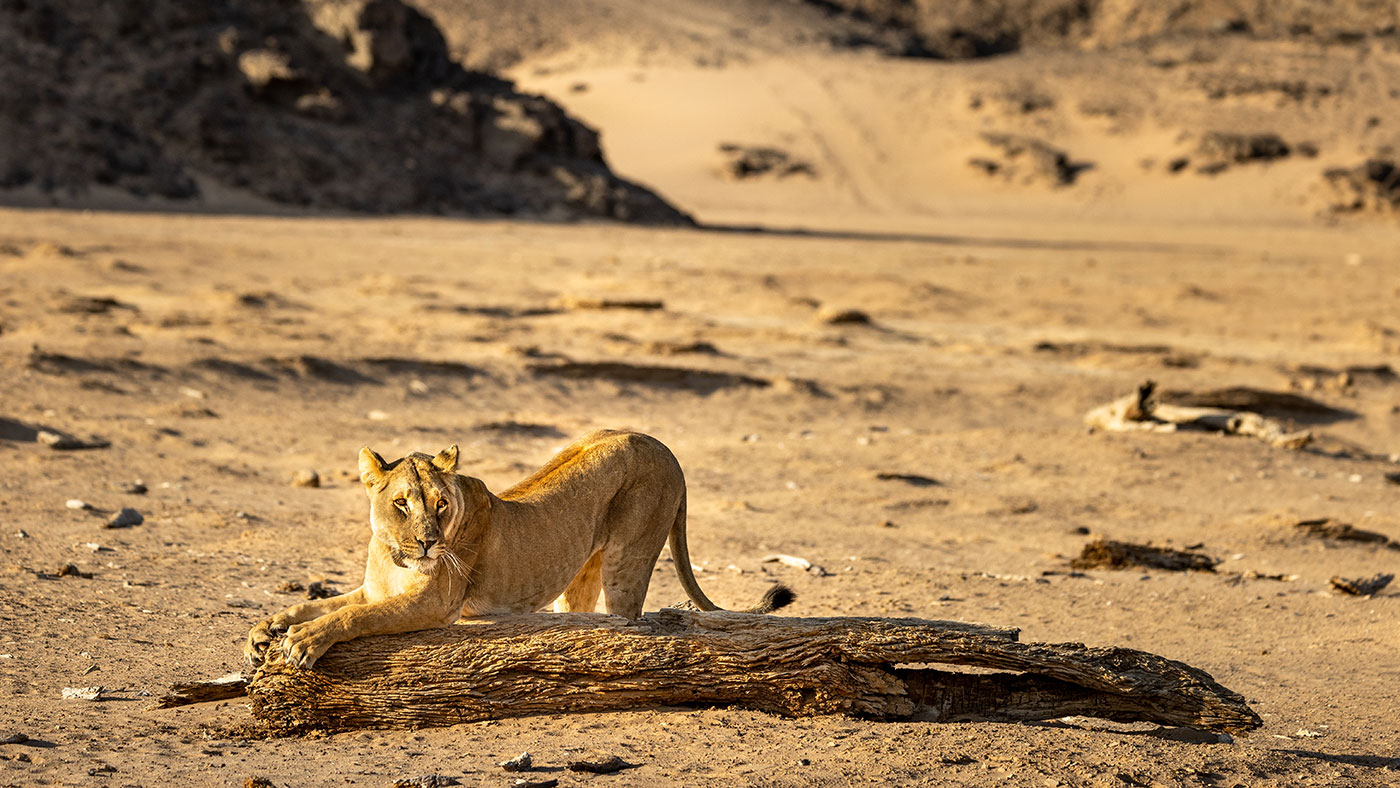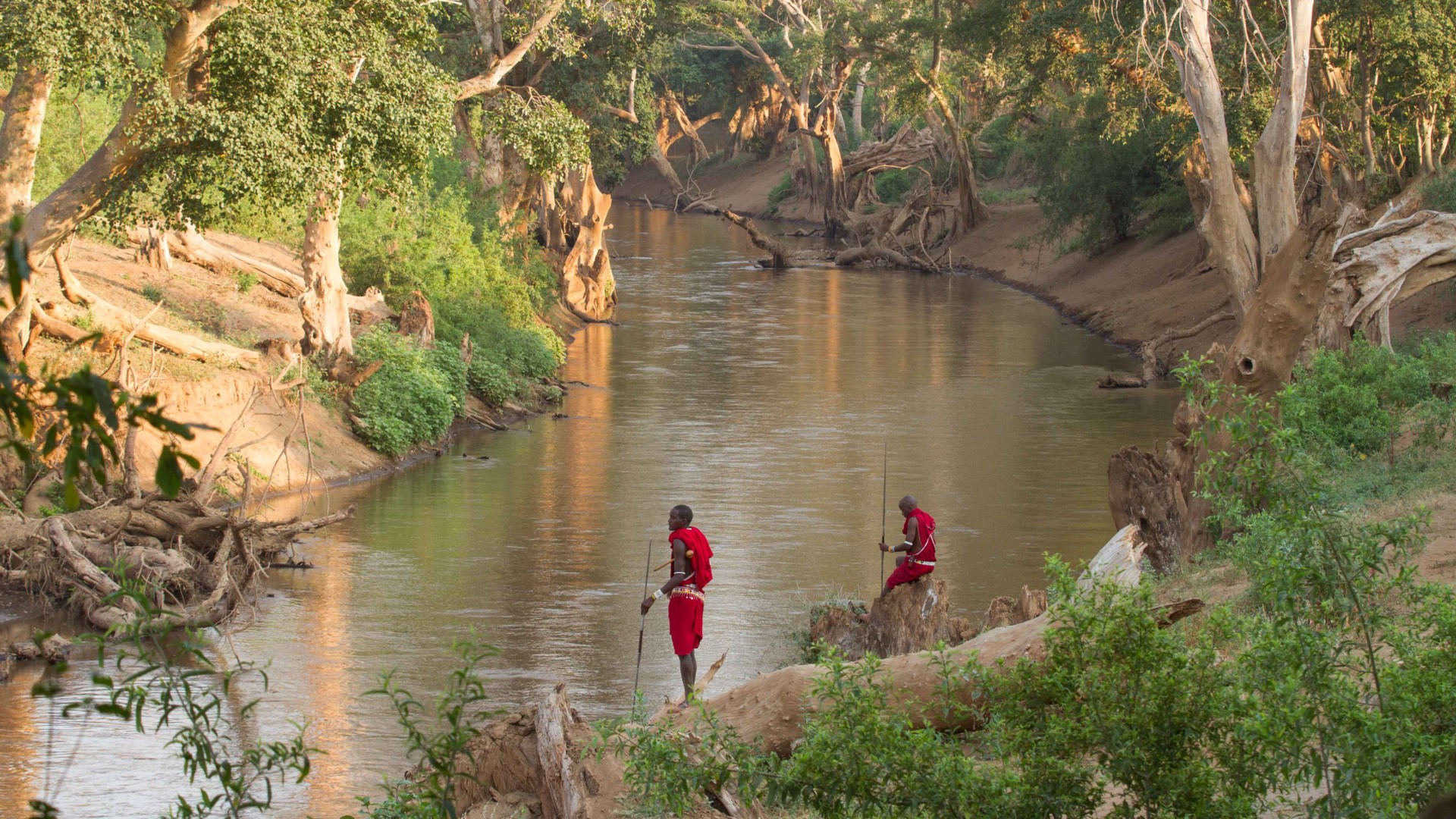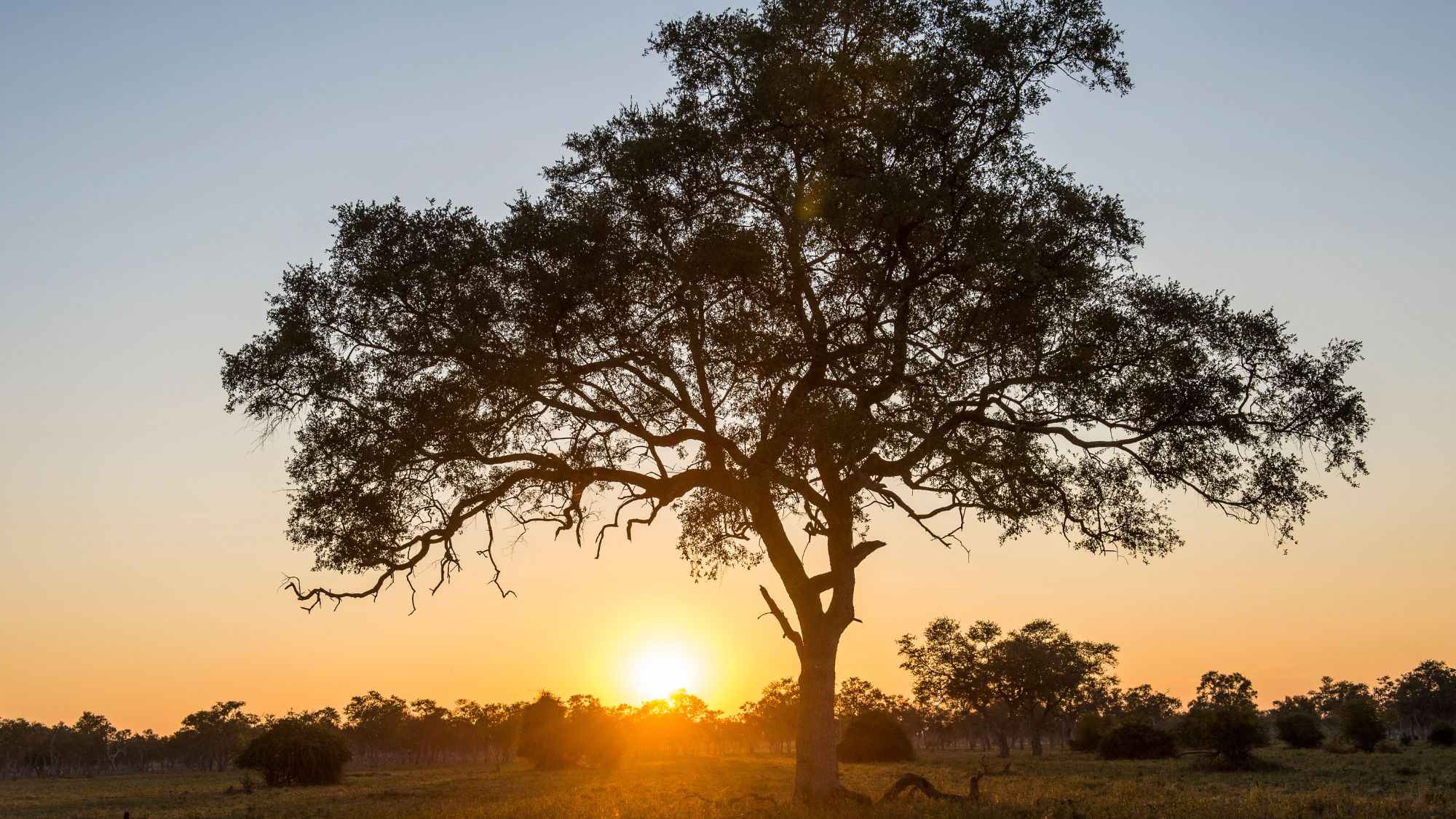Skeleton Coast safari: a life-affirming desert adventure in Namibia
Find your life force in the Namib desert, where wildlife of all shapes and sizes thrive against the odds

Ten days in the desert may sound more like a punishment than a luxury holiday, but a trip to Namibia will transform your preconceptions of the world’s arid places. Astonishingly beautiful, the dunes and plains of the Namib desert are bristling with unexpected animals and birds, all eking out an unlikely existence under the hot sun.
And nowhere is the line between life and death drawn with more clarity than at the twin saltpans of Sossusvlei and Deadvlei. At one, the desert has erupted into life. When I visit, recent rains – a rare and precious occurrence – had filled it with water, but even after drier spells there are subterranean streams here that feed a cluster of acacias. The trees cast cooling shadows in which shrubs and flowers can flourish, and they in turn provide food and shelter to the bugs and birds that support a lean yet surprisingly varied ecosystem. As well as sidewinder snakes and chameleons, there are springbok, zebra, oryx and ostriches aplenty. Leopards too, although you are unlikely to see them.
A few hundred yards from Sossusvlei, the precarious nature of all this life is laid bare. No one knows why Deadvlei dried up about 900 years ago, but the effects of the change were profound. Plants died and animals departed, leaving only a spectral forest of scorched tree trunks poking up from the pan like dark skeletal fingers.
The Week
Escape your echo chamber. Get the facts behind the news, plus analysis from multiple perspectives.

Sign up for The Week's Free Newsletters
From our morning news briefing to a weekly Good News Newsletter, get the best of The Week delivered directly to your inbox.
From our morning news briefing to a weekly Good News Newsletter, get the best of The Week delivered directly to your inbox.

As the sun strengthens and the heat radiates up from the sand, you might be forgiven for craving a little indulgence. It is fortunate, then, that a short drive through the dunes will get you to Wilderness Safaris Little Kulala, an elegant sanctuary in the heart of the desert. The camp consists of just 11 timber-and-glass cabins, each with air conditioning, a private plunge pool and a rooftop sundeck, looking out over sandy plains fringed with golden grass. At night the views are, if anything, even grander. Dry air and dark skies let the stars and planets shine. Mars, Jupiter and Venus are often visible to the naked eye as bright, steady beacons amid the glittering cloud of stars that makes up the Milky Way.
Unlike at other safari lodges, game drives are not the primary draw here. Although you will see wildlife – my most spectacular sighting came early in the morning, as an oryx strolled along the ridge of a dune, the sun rising gloriously behind it – the real attraction is the desert itself. You can drift above it in a hot-air balloon, blast through it on quad bikes or wander through it on foot. On the evening of our visit to Sossusvlei, we opted to walk, soaking in the silence of the desert, and getting closer to some of its smaller inhabitants.

The antlion must be one of the strangest. Spending most of its life in a bug-like larval stage, it builds a steep-sided sand trap and waits for ants to fall in. Since any odour would betray it to potential prey, it has evolved a digestive tract with no outlet. Instead of excreting waste, this fastidious little creature stores it all inside its body – until, after several years, it is ready for two transformations. First it spins all that waste into a silk cocoon, then metamorphoses into something like a dragonfly, a winged state in which it spends just a fleeting few weeks before death.
An odd life, certainly, but who are we to judge? As evening fell and we stood, alone in so much glorious space, our own ways of living – traffic jams, social media, Amazon deliveries – all seemed just as alien. The sun lit the sky aflame and then, as it slipped below the horizon, left behind a calming purple glow.
A free daily email with the biggest news stories of the day – and the best features from TheWeek.com
What separates Sossusvlei and the Namib from other great spectacles – the Grand Canyon, for example, or Victoria Falls – is that those experiences are inevitably shared with busloads of fellow tourists, chattering away and posing for photos. In Namibia, it’s often just you and the desolate beauty of the desert.

Our next destination was even more remote. Getting there required two flights, the second in a six-seater Cessna, and then an hour in a 4x4. “Hold on!” our guide shouted from time to time, as we slithered down a sandbank or bounced through a field of boulders. Eventually we arrived at Wilderness Safaris Serra Cafema, in what might be Africa’s most surreal location. It looks, in fact, like three unrelated landscapes stitched together: to the south, the golden glow of yet more sand dunes, to the north a dark, angular range of mountains, and in between a narrow strip of green – a tree-lined river bank that wouldn’t look out of place in Oxfordshire.

But this isn’t the Cherwell or the Thames. It marks the border between Namibia and Angola, and as you sit on the lodge’s wooden decking, enjoying your lunch, you may well see crocodiles floating downstream. If the water conditions allow, you will see them from closer quarters too, basking on a sand bank as you cruise past in a powerboat, or lurking below the surface with only their eyes above the water. There are baboons too, clambering from rock to rock, and countless birds swooping and dipping overhead. Some of them are found only along the Kunene river, with its unique combination of desert and wetland.
The river has long been a lifeline for the area’s human inhabitants, too. The Himba people, who number about 50,000, live either side of the border and move freely between Namibia and Angola, grazing their livestock wherever they find pasture. The Wilderness Safaris lodge has a years-long relationship with a few families from the local clan, who invite guests to spend a morning among them and their animal-skin tents. When we arrive, the men are absent, either tending to cattle or visiting other villages, so it’s the grandmother, mothers and children who act as our guides. Or really just the mothers and children, since the grandmother is thoroughly absorbed in smoking an improvised pipe.

It is an uncompromising way to live, and some who are born into it choose to leave for towns and cities. Those who remain are Namibia’s last nomads, and they have outlasted most other attempts to populate the desert. This part of the country is known as the Skeleton Coast, a none-too-subtle indication of what happened to many of the travellers who strayed into its arid grip. Most would have ended up here involuntarily, having been shipwrecked in the fog that often hugs this cold and rocky shore. Others came here by choice, hoping to make their fortunes from whale oil or diamonds – but they could rarely sustain their optimism for more than a few years.
On the coast itself, 150 miles south, I saw a few relics of these abandoned dreams: the rusting hulks of machines that once sifted the sand for treasure. There are shipwrecks too, though not so many now. Salt and fog have taken their toll on the old wrecks and GPS keeps new ships out of danger, but this remains a bleak, unsettling place to visit. A sense of dread hangs in the air, drifting in the wind with tendrils of mist that rob the sun of warmth and cast an odd, flat light.

Just a few miles inland, everything is different. The hot sun and white sand are harsh but conventional – and beautiful, too. You will take more photos than you need of rippling sand and light, and you will want to run barefoot and play in the dunes. Away from the chill of the ocean, sunshine burns away the fog – and with it goes the inexplicable sense of despair.
Our day trip to the coast ended with a short hop in a light-aircraft, a scenic flight made necessary after the unusual rains of the previous month had left the sandy floodplain impassable. The pilot made the most of the opportunity, flying low and in sweeping S-shapes, giving passengers on both sides a clear view of the valley.

From a few thousand feet, the effect of all that water was obvious. The Hoanib river may have dried up again, but its course was traced with lurid green grass. It was evident too that it had flowed with some force. Trees lay strewn where the water had left them, and in some places entire dunes had been washed into the sea, leaving a flat, open expanse carved through the wall of sand. Over time, the dunes will creep back to reoccupy the space, until the next flood comes through.
We reached Hoanib Skeleton Coast, one of Wilderness Safaris’ most striking lodges, in time for afternoon tea. A small collection of canvas-roofed cabins, the camp treads lightly on the desert landscape. The lounge, open-sided and furnished in muted pinks and taupes, was the perfect setting for a post-expeditionary slice of cake – which served to banish any lingering eeriness from the morning’s adventure. Later, we would sit around a campfire in front of the tents and talk about our hopes for the next morning’s game drive, our last of the trip.

This part of the desert is home to some of Africa’s most enigmatic animals – offshoots of other species that have evolved to deal with the dry conditions. We had been lucky to see a herd of desert-adapted elephants the previous day, a long way off across the flood plain. With smaller bodies and longer legs than their African bush elephant relatives, they can more easily cover the long distances between watering holes. Their feet are also broader, spreading their weight over the sand. We had seen hyenas too, of both the spotted and brown variety, but a long search for desert lions had turned up nothing but tracks. The next morning would be our final chance.
It was therefore with a mixture of excitement and relief that when we set out in the pre-dawn gloom, we were barely out of camp when our guide brought the 4x4 to a sharp stop. In front of us, sprawled across the track, was a sleeping lion. We reversed, took a detour and approached her from the other side, so the sun would be behind us when it eventually came up. And then we waited.
She looked vulnerable, laid out in the sand, without the tall grass or island of acacias I associate with a lion in repose. Instead she had to make do with the soft sand stirred up by the tyres of passing 4x4s and a few pieces of driftwood. Most predators live somewhat precarious lives, the odds generally stacked against them, but the lions of the Namib desert take this to an extreme. They rely on their prey not only for food but for moisture too, drinking their blood to supplement the little water they can find. Such is the scarcity of potential targets that they will hunt mice and gerbils as well as springbok and oryx – prey that most lions would consider beneath them.

As the sun came up, it looked for a moment as if our lion might be in luck. A lone springbok approached from across the plain, heading directly into the danger zone. The lion hunkered down, trying to be invisible – but then the springbok stopped, head raised, ears pricked. The lion stood no chance from this difference, but she kept her eyes on the potential prey as it turned and stalked away. Another meal had eluded her and, as the sun climbed higher and the heat of the day began to build, the time to hunt was passing.
We spent hours with the lion that morning, watching as she stretched and padded into the dry river bed, sending springbok and oryx skittling out of her path. Eventually, we realised we would have to leave her to her morning rounds and begin our mundane preparations for the journey back to London. Dusk would bring another opportunity for the lion to eat, another glorious Namibian sunset, another spectacular array of stars. By then, a few more antlions would have taken wing, the elephants would have moved on to another watering hole and in the Himba villages, people would be settling down in their tents or sleeping out with their cattle under the stars. But I would be sitting with a few hundred others in a metal tube, hurtling away from the desert – and already wondering when I would be able to return.

Wilderness Safaris’ nine-night Natural Wonders of Namibia itinerary follows a similar route to the one described above. Or contact the company’s travel advisers for more information and tailor-made trips. Off-peak rates (available from January to March 2023) start from about £575 per person per night at Little Kulala, £650 pppn at Serra Cafema and £765 pppn at Hoanib Skeleton Coast, based on two-people sharing. The rate includes meals, drinks and most activities. Flights to and from the lodge are extra. Flights from the UK to Windhoek are available from about £700 with Lufthansa (via Frankfurt) or Qatar Airways (via Doha)
Holden Frith is The Week’s digital director. He also makes regular appearances on “The Week Unwrapped”, speaking about subjects as diverse as vaccine development and bionic bomb-sniffing locusts. He joined The Week in 2013, spending five years editing the magazine’s website. Before that, he was deputy digital editor at The Sunday Times. He has also been TheTimes.co.uk’s technology editor and the launch editor of Wired magazine’s UK website. Holden has worked in journalism for nearly two decades, having started his professional career while completing an English literature degree at Cambridge University. He followed that with a master’s degree in journalism from Northwestern University in Chicago. A keen photographer, he also writes travel features whenever he gets the chance.
-
 Zimbabwe’s driving crisis
Zimbabwe’s driving crisisUnder the Radar Southern African nation is experiencing a ‘public health disaster’ with one of the highest road fatality rates in the world
-
 The Mint’s 250th anniversary coins face a whitewashing controversy
The Mint’s 250th anniversary coins face a whitewashing controversyThe Explainer The designs omitted several notable moments for civil rights and women’s rights
-
 ‘If regulators nix the rail merger, supply chain inefficiency will persist’
‘If regulators nix the rail merger, supply chain inefficiency will persist’Instant Opinion Opinion, comment and editorials of the day
-
 8 incredible destinations to visit in 2026
8 incredible destinations to visit in 2026The Week Recommends Now is the time to explore Botswana, Mongolia and Sardinia
-
 Experience Tanzania’s untamed wilderness from Lemala’s luxury lodges
Experience Tanzania’s untamed wilderness from Lemala’s luxury lodgesThe Week Recommends The vast protected landscapes are transformed into a verdant paradise during ‘emerald season’
-
 Uttar Pradesh: from a once-in-a-generation festival to tiger tracking in an ancient forest
Uttar Pradesh: from a once-in-a-generation festival to tiger tracking in an ancient forestThe Week Recommends Soak up the state's rich culture on one of Explorations Company's specially curated tours
-
 South Korea highlights: ancient history meets modern culture
South Korea highlights: ancient history meets modern cultureThe Week Recommends From the bright lights of Seoul to Busan's beaches and the 'living museum' of Gyeongju, this tour offers a taste of a unique heritage
-
 On the trail of the Iberian lynx
On the trail of the Iberian lynxThe Week Recommends Explore the culture, food – and wildlife – of Extremadura on this stunning Spanish safari
-
 Desert wellness in Scottsdale: the best of Arizona's Old West
Desert wellness in Scottsdale: the best of Arizona's Old WestThe Week Recommends Boost body, mind and soul in this hub of healthy living
-
 Shompole Wilderness Camp: immerse yourself in nature at this secluded retreat
Shompole Wilderness Camp: immerse yourself in nature at this secluded retreatThe Week Recommends This luxurious family-run camp in southern Kenya has access to more than 350,000 acres of pristine savannah
-
 A horseback safari in the wilds of Zambia
A horseback safari in the wilds of ZambiaThe Week Recommends Unforgettable trip offers chance to see wildlife and experience local villages